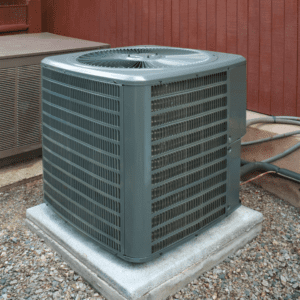
As the temperature rises, your air conditioner works more to keep your home comfortable. However, if you rely on an older unit, you may be overspending on electricity bills and frequent maintenance. Investing in a new air conditioner can considerably save long-term costs and increase energy efficiency.
Why Older AC Units Cost You More
- Increased Energy Consumption
- According to the U.S. Department of Energy, air conditioning accounts for about 12% of total home energy costs annually.
- Older units operate at SEER (Seasonal Energy Efficiency Ratio) ratings as low as 8-10, whereas new models often start at SEER 14 and go up to 22+.
- Higher SEER ratings mean better efficiency, translating to up to 50% energy savings compared to older systems.
- Frequent Repairs Add Up
- A typical AC repair can cost between $150 to $500, with major issues like compressor replacement reaching $1,200 to $2,500.
- If you’re spending more than $500 annually on repairs, it may be more cost-effective to replace your unit entirely.
- New AC units come with warranties of 10 years or more, reducing unexpected repair costs.
- Outdated Refrigerants Are Expensive
- Older units often use R-22 refrigerant (Freon), which was phased out in 2020 due to environmental concerns.
- The cost of R-22 has skyrocketed, with some homeowners paying $200+ per pound.
- New systems use R-410A, which is more affordable and energy-efficient.
How a New AC Saves You Money
- Lower Energy Bills
- ENERGY STAR-certified air conditioners can save homeowners 20-40% on cooling costs.
- A new high-efficiency AC unit could reduce annual cooling expenses by $200 to $500, depending on usage and climate.
- Smart Technology & Features
- Variable-speed motors adjust airflow for optimized cooling and lower energy use.
- Smart thermostats sync with modern ACs, providing automated energy savings.
- Rebates & Tax Incentives
- The Inflation Reduction Act of 2022 offers tax credits up to $600 for energy-efficient AC replacements.
- Many utility companies provide rebates ranging from $300 to $1,000 for upgrading to high-efficiency systems.
Signs You Should Replace Your AC
- Your Unit Is Over 10-15 Years Old – Most systems decline in efficiency after a decade.
- Frequent Breakdowns – More than two major repairs in a year is a red flag.
- Higher Energy Bills – A steady increase in cooling costs signals inefficiency.
- Uneven Cooling – Some rooms stay hot while others are too cold.
- Loud Noises or Strange Smells – Indicate motor wear, electrical problems, or mold buildup.

Choosing the Right New AC Unit
- Size Matters
- A unit that is too small will struggle to cool your home, while one that is too large will cycle too frequently, wasting energy.
- HVAC professionals use Manual J Load Calculations to determine the correct size.
- Look for High SEER Ratings
- A SEER 16-18 unit is ideal for balancing efficiency and cost.
- Higher SEER ratings (20+) provide maximum savings but have higher upfront costs.
- Consider Ductless Mini-Splits
- Great for older homes, garages, and additions.
- Can cut cooling costs by up to 30% compared to central AC.
The Long-Term Financial Benefits
| Factor | Old AC Unit | New AC Unit |
| SEER Rating | 8-12 | 14-22+ |
| Energy Savings | None | 20-50% reduction |
| Repair Costs | High & frequent | Low, under warranty |
| Refrigerant | Expensive R-22 | Cost-effective R-410A |
| Smart Features | No | Yes (smart thermostat, variable speed) |
A new air conditioning system is a smart investment that pays for itself through lower energy bills, fewer repairs, and better efficiency. If your AC is over 10 years old, consider an upgrade to enjoy cooler summers and long-term savings.
Contact ADON CPS Today
Ready to upgrade your AC and save on energy costs? Contact ADON CPS for expert advice, installation, and maintenance services. Call us now or visit our website to schedule a consultation!
Read More from Our Blog
Check out our latest articles for tips on HVAC maintenance, energy efficiency, and home comfort solutions!
Understanding AC Installation Costs in the U.S. » « Essential Heater Upkeep







